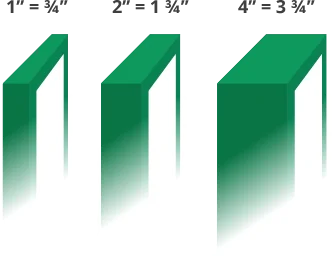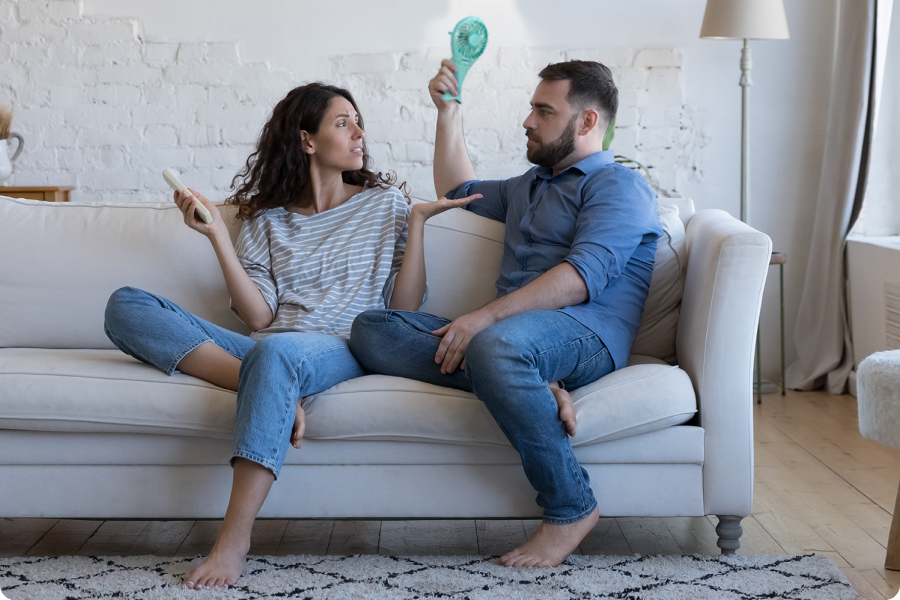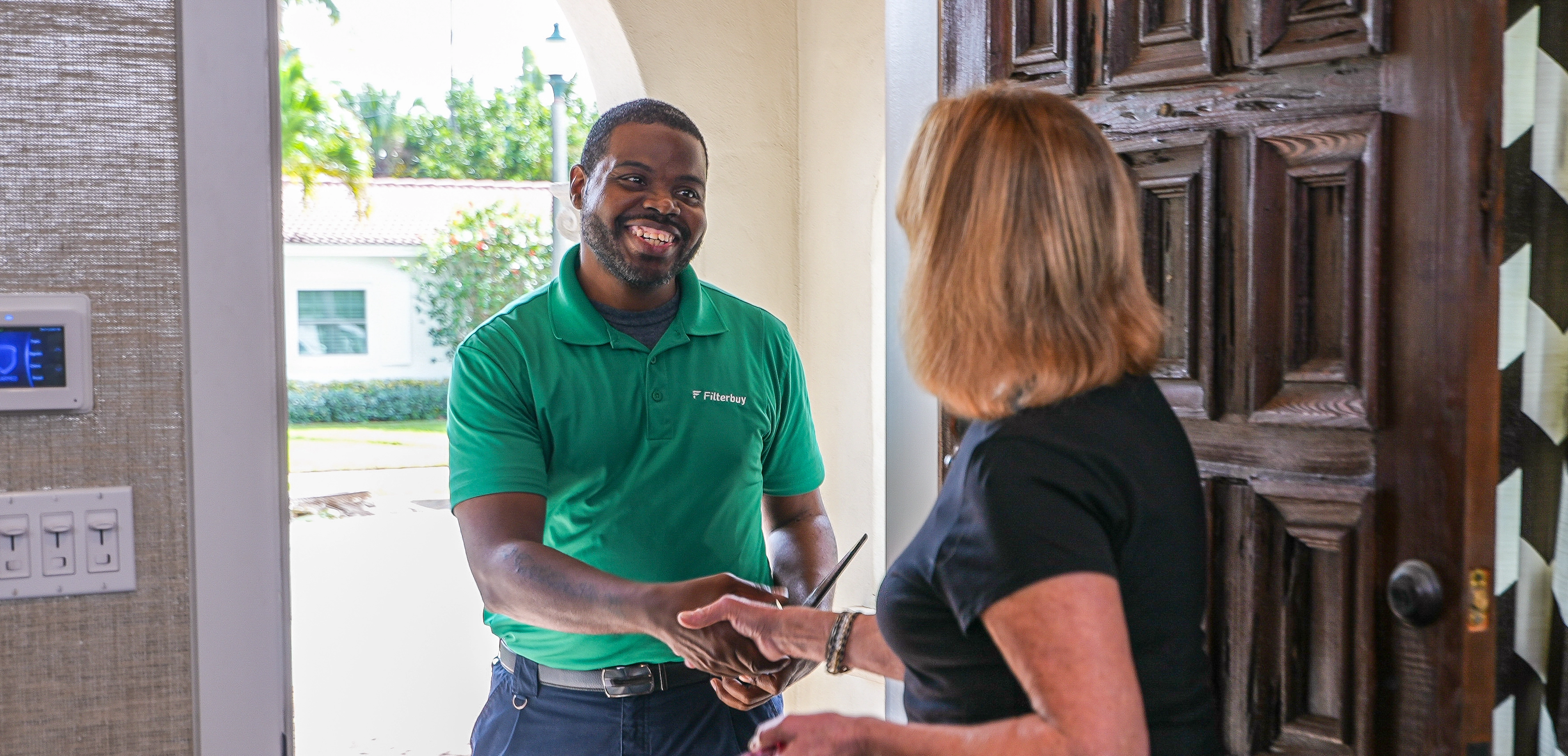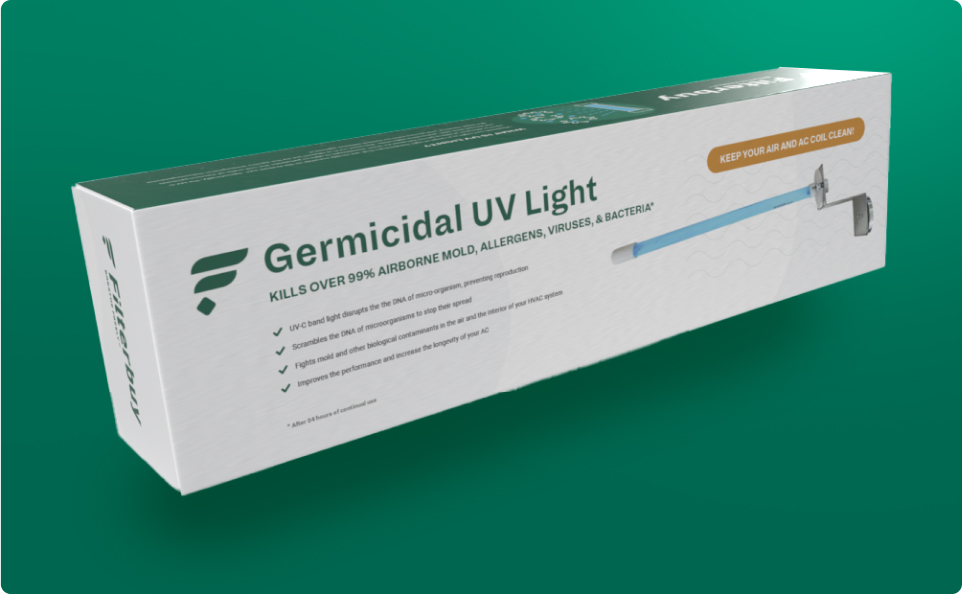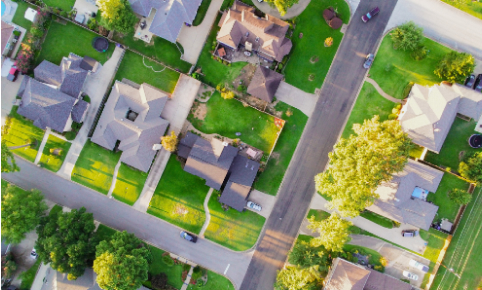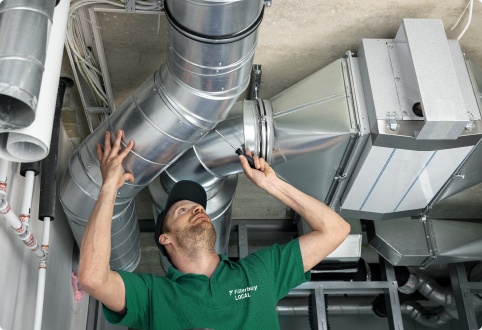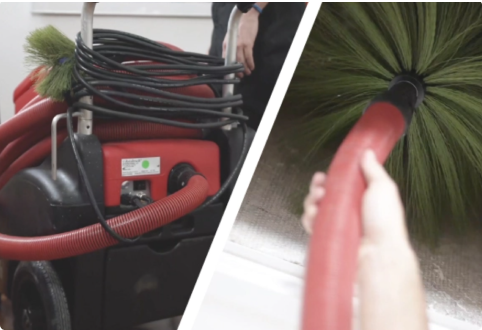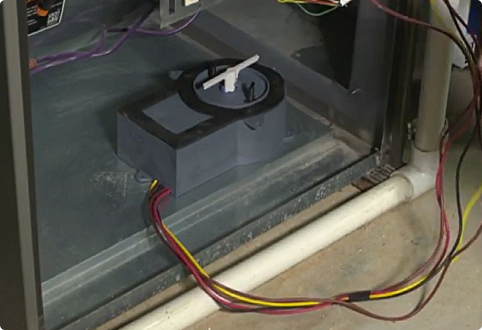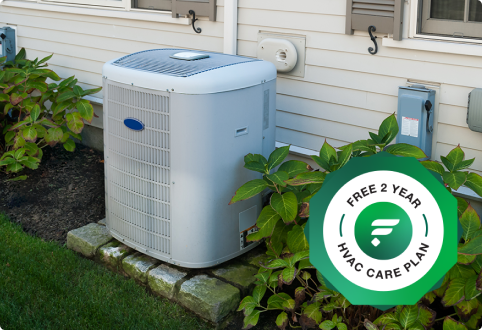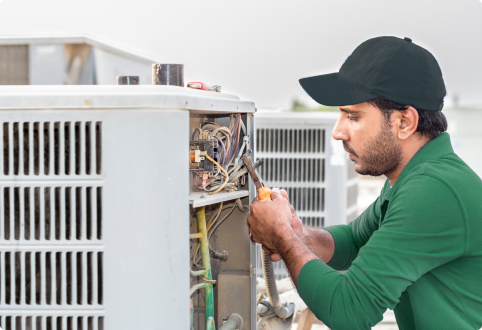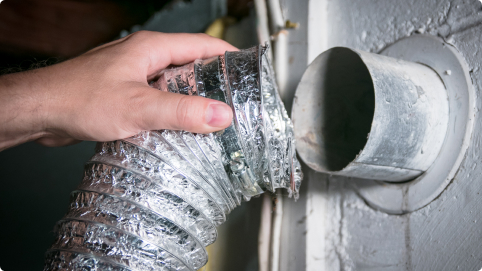Welcome to Filterbuy HVAC Solutions, the best HVAC UV light installation service company proudly serving in and near the greater Fort Lauderdale, FL area. Please let us know how we can help solve your Fort Lauderdale HVAC UV light installation needs with professional, affordable, and fast residential and commercial HVAC services by getting a free online quote or by giving our friendly HVAC specialists a call. We look forward to hearing from you!
HVAC UV Light Installation in Fort Lauderdale FL
Installing UV lights in HVAC systems has become increasingly popular as a way to reduce allergens and improve air quality, particularly in the Fort Lauderdale area of Florida.
Your HVAC system needs this technology to provide better air quality for your family or commercial building occupants. Its proper installation offers fewer allergies within your home or office in the Fort Lauderdale FL area.
Research shows that these ultraviolet lights are effective at reducing airborne contaminants such as mold spores, bacteria, and viruses which can lead to health problems for people living or working in buildings with poor air circulation.
The process of installing an HVAC UV light system begins with determining what type is best suited for the particular building's needs based on factors like size and location. Specialized technicians must then be hired to install the unit correctly so that it functions properly without any safety issues arising from incorrect wiring or placement. The cost of this installation may vary depending on the size of the unit but generally ranges from several hundred dollars up to several thousand.
Finally, once installed, regular maintenance is needed to ensure that the system is functioning optimally and providing maximum benefit by removing airborne particles effectively. This includes cleaning off accumulated dust regularly, replacing filters when necessary, checking bulbs periodically for proper operation, and more.
Benefits Of UV Light Installations
UV light installations are becoming increasingly popular among many homeowners looking to improve their HVAC systems. Ultraviolet (UV) light technology has the capability of decreasing bacteria, mold, and other pollutants in a home's air at an incredibly efficient rate. By installing UV lights into existing HVAC systems, homes can experience better air quality with just a few simple steps. Thus, exploring the various advantages of incorporating this type of system is essential for making informed decisions on whether or not it fits one’s needs.
First, UV light improves indoor air quality by ridding the environment of harmful microorganisms. These germs can range from common viral infections such as colds and flu to more serious health issues like asthma and allergies caused by dust mites and pet dander floating around in the air. With the regular use of ultraviolet radiation lamps located within ventilation ducts, these contaminants are eliminated before they have a chance to affect anyone living inside the home. Not only does this reduce potential illnesses due to airborne pathogens but also helps those who suffer from chronic respiratory conditions feel more comfortable while indoors.
Another benefit that comes along with using UV lights is reduced energy consumption. As fewer allergens and particles circulate through HVAC units, less strain is put on them when running which leads to lower electricity bills each month. Installing high-efficiency UV lights into existing HVAC systems also eliminates any additional maintenance costs associated with having separate filters changed out frequently throughout the year due to clogging from trapped particles in standard filters.
Furthermore, since no pollutants will be passing through vents anymore during operation, their lifespan increases significantly resulting in even greater savings over time for households utilizing this modern technology.
With all its benefits considered, it is clear why so many people are choosing to install UV lights within their respective HVAC systems today; however, understanding how these components work together is still important for getting the most out of this investment moving forward.
HVAC Systems And UV Lights
Installing a UV light in an HVAC system is becoming increasingly popular. The purpose of UV light is to reduce indoor air pollution and improve air quality by killing bacteria, mold, viruses, and other airborne contaminants that can cause health issues for occupants. UV lights are beneficial for both residential and commercial buildings because they help keep the building’s air clean. When installing a UV light into an HVAC system, there are several factors to consider such as cost, size of the unit, type of bulb used, and installation process.
The cost of purchasing and installing a UV light will vary depending on the brand chosen and the size of the unit needed. It is important to research different brands before purchasing so that one can make sure they receive a high-quality product. Additionally, it is essential to choose the correct size unit based on the square footage of the area being treated as well as what types of pollutants need to be targeted.
When selecting a type of bulb for use in an HVAC system with a UV light installed, two common options include low-pressure mercury vapor lamps or medium-pressure quartz arc lamps. Low-pressure mercury vapor bulbs produce ultraviolet radiation at 254 nanometers which kills most microorganisms including bacteria and molds but does not penetrate deep enough to kill some viruses or fungal spores. Medium-pressure quartz arc lamps radiate ultraviolet rays between 185 nanometers to 310 nanometers which penetrate deeper than 254 nanometers allowing them to reach further into filter systems where some viral particles may hide from shorter wavelengths as 254-nanometer bulbs emit. Knowing these differences helps determine which type of bulb works best for an individual's needs when deciding on how powerful their filtration should be within their HVAC system.
The installation also plays an important role in the effective functioning of an HVAC system with added UV lights because incorrect placement could lead to inefficient performance due to too little exposure time or obstruction from fan blades causing blocked airflow around the lamp itself. Careful consideration must go into positioning during installation based on manufacturer instructions for optimal results when using this technology inside any structure whether residential or commercial spaces aiding in keeping those inhabitants healthy by improving overall indoor air quality.
Types Of UV Lights For HVACS
UV light is a powerful tool used in HVAC systems to reduce the presence of volatile organic compounds and improve air quality. As with any technology, different types of UV lights are available for installation into an HVAC system. Understanding what options exist can help homeowners make an informed decision when selecting the right type of UV light for their needs.
The most common type of UV light used in HVACs is germicidal ultraviolet (GUV). GUVs use short-wave radiation to kill infectious microorganisms, such as airborne viruses and bacteria, which can cause respiratory illnesses. This type of UV light also helps reduce odors and mold spores that tend to accumulate in ductwork over time. Furthermore, it is effective at reducing levels of VOCs present in indoor air because these gasses absorb UV light energy before breaking down into harmless molecules.
Another option for installation within an HVAC system is visible-light photoreactive (VLPR) bulbs. These bulbs emit both visible and invisible wavelengths of light, allowing them to break down contaminants like dust particles, pollen, smoke residue, and other allergens more effectively than GUVs alone. Additionally, VLPR bulbs work by emitting continuous waves throughout the entire length of the bulb's life, unlike GUVs which require periodic replacement due to a gradual decline in output after each cycle, making them ideal for long-lasting protection against pollutants indoors.
By understanding all the available options on the market today, consumers can choose the best solution that fits their needs while achieving maximum efficiency from their HVAC system.
Cost Considerations For Installation
When considering the cost of installing a UV light system in Fort Lauderdale, FL, it is important to factor in all necessary components and labor. Installation costs can vary significantly depending on factors such as the complexity of the job, the type of equipment used, and local rates for licensed contractors. Most HVAC installation projects will require both materials and labor fees; these should be taken into account when budgeting for an installation project. Depending on the scope of work being done, some jobs may also require additional permits or inspections that could add further expense.
In addition to material and labor costs, homeowners should plan for ongoing maintenance expenses related to their HVAC systems. These may include periodic filter replacements or other routine upkeep services needed to ensure efficient operation over time. Homeowners should consult their user's manual or contact their installer/HVAC technician for specific recommendations regarding regular maintenance procedures and estimated costs.
Homeowners need to understand all associated expenses before committing to any major renovation project involving HVAC systems. Doing research upfront and obtaining multiple estimates from different contractors can help ensure that they receive quality products and services at reasonable prices while staying within their budget constraints. Local regulations and guidelines must also be taken into consideration when planning an installation project to avoid fines or delays due to noncompliance issues.
Local Regulations And Guidelines
It is important to consider local regulations and guidelines when installing an HVAC UV light system in Fort Lauderdale, FL.
The first regulation to consider is the Florida Building Code. This code outlines safety standards and requirements for building construction projects in the state of Florida, including those related to electrical systems. It also guides how to properly install certain components like wiring and conduit boxes. Contractors should ensure they are familiar with these codes before beginning any project involving an HVAC UV light system in Fort Lauderdale, FL.
Contractors should also check with their local municipality or county government for additional ordinances that may affect the project. These ordinances could include restrictions on where new equipment can be installed as well as noise level limits and other environmental considerations such as air quality control measures. Additionally, permits may need to be obtained before beginning any work related to the installation of an HVAC UV light system in Fort Lauderdale, FL.
By understanding all applicable laws and regulations associated with the installation of an HVAC UV light system in Fort Lauderdale, FL., contractors can better prepare themselves for success and help protect their clients from potential legal issues down the line. With a clear understanding of all rules and regulations governing this type of work, contractors can begin preparing the HVAC system for installation accordingly.
Preparing The HVAC System For Installation
Installing a new UV light system into an existing HVAC system can be compared to assembling a complex jigsaw puzzle. It requires time, patience, and skill to ensure the pieces fit together correctly.
Before starting the installation process, the HVAC system must be prepared properly for the addition of UV light technology.
To begin with, all components must be checked thoroughly as worn or broken parts can cause issues during operation. Secondly, any debris within the ducts should be removed, otherwise, this could affect airflow and reduce efficiency. Finally, if there are any signs of corrosion on any components then these will need to be replaced before attempting installation.
Professional Installation Services In Fort Lauderdale FL
Once the HVAC system is properly prepared, professional installation services in Fort Lauderdale FL are available to complete the job. These services have experienced technicians who can assess a customer’s needs and install an appropriate UV light to meet their requirements.
The technician will first inspect the existing unit before recommending any modifications or additions that may be necessary. They will also measure and cut any parts needed for the proper installation of the new unit, as well as connect electrical components if required. After installation is completed, they will test it to ensure everything is working correctly and provide customers with a detailed list of all parts used during installation.
In addition to providing professional installation services, some companies in Fort Lauderdale offer maintenance and repair services for UV lights. Customers can schedule regular checkups on their systems to make sure all components are functioning properly and no problems are present. During these inspections, technicians can identify potential issues before they become serious and costly repairs down the road.
Furthermore, preventive maintenance measures such as periodic cleaning of air filters, condensers, coils, blowers, fan blades, ducts, and other areas should be performed regularly to keep a system running at peak efficiency levels. This ensures an optimal level of comfort while helping reduce energy costs over time. With proper maintenance and care throughout its lifetime, a UV light system can last many years without needing significant attention or expensive repairs due to neglect.
Maintenance And Cleaning Requirements
It is estimated that HVAC systems with UV light installations can reduce energy consumption by up to 15% per year. To ensure such benefits are realized, the system must be regularly serviced and cleaned.
Regular maintenance includes checking for any loose parts or wiring issues; replacing worn-out bulbs regularly (usually every six months); and verifying the proper functioning of all components. Additionally, it is recommended that filters should be changed at least twice per year.
Cleaning requirements also vary depending on the type of UV light installed in an HVAC system. For instance, quartz sleeve tubes should be wiped clean with an alcohol solution once a month to prevent dirt from accumulating inside them.
On the other hand, air scrubbers require biweekly cleaning with special detergents approved for use with UV lights to remove dust particles without compromising their efficiency. Moreover, following the manufacturer's instructions is necessary when performing any kind of cleaning or maintenance activity related to UV light installation systems.
In addition to these routine maintenance and cleaning tasks, safety precautions should always be taken into consideration when working with ultraviolet radiation sources.
Safety Precautions With UV Light Systems
The installation of a UV light system in an HVAC unit requires careful attention to safety precautions. Without proper adherence, the risk of injury or equipment damage increases significantly. Therefore, technicians and homeowners alike need to understand and follow appropriate safety protocols when working with these systems.
Firstly, caution should be taken when installing electrical wiring to power the UV lights to prevent shocks and fires. Furthermore, eye protection must be worn while handling fluorescent bulbs since they emit dangerous ultraviolet radiation which can cause permanent blindness if exposed directly. Additionally, protective clothing such as gloves should also be used when dealing with any part of the UV light system itself due to its high temperatures during operation.
All safety protocols must be followed correctly when installing a UV light system so that no harm comes to those involved or any property affected by their work. Following proper guidelines during installation will ensure optimal functionality of the system and reduce incidents associated with improper use or maintenance over time. With this in mind, technicians and DIYers alike must take extra precautions before troubleshooting common issues with UV lighting systems.
Troubleshooting Common Issues
When installing an HVAC UV light, it is important to be aware of any common issues that may arise. Many potential problems can be easily addressed by following a few simple steps.
Firstly, when performing the installation process, all safety precautions must be followed to avoid injury or damage to equipment.
Secondly, a thorough inspection should take place before turning on the power supply for the system. This includes checking all connections and voltage ratings are correct, as well as inspecting for signs of wear or damaged components.
Moreover, if the unit fails to start up properly after being powered on, it could indicate a serious problem such as faulty wiring or incorrect settings. In this case, it is recommended to consult with a professional technician before attempting further troubleshooting procedures.
Frequently Asked Questions
How Much Does It Cost to Install a UV Light in an HVAC System?
Installing a UV light in an HVAC system typically costs between $200 to $600, depending on the type of UV light, the size of the HVAC system, and the complexity of the installation process. Factors such as brand, quality, and additional features can also affect the overall cost. It is recommended to consult with a professional HVAC technician to get an accurate estimate tailored to your specific needs.
Is It Worth Installing UV Light in the HVAC?
The decision to install a UV light in your HVAC system depends on various factors. UV lights can help improve indoor air quality by reducing airborne bacteria, viruses, and mold spores. They can also prevent microbial growth on the HVAC components, leading to a cleaner and more efficient system. However, the effectiveness of UV lights may vary, and their benefits need to be weighed against the initial cost of installation.
Can I Install a UV Light in My HVAC System?
In most cases, it is possible to install a UV light in your HVAC system. However, it is crucial to ensure that the installation is done correctly to maximize the benefits of UV light. Professional installation is recommended to ensure safety, proper positioning, and optimal performance of the UV light within the HVAC system.
What Is the Life Expectancy of a UV Light for HVAC?
The life expectancy of a UV light for HVAC systems can vary depending on the quality of the light, usage patterns, and maintenance practices. On average, UV lights used in HVAC systems can last anywhere from 9,000 to 14,000 hours of continuous use. Regular maintenance, such as cleaning the UV light and replacing bulbs when necessary, can help extend its lifespan.
What Is the Disadvantage of UV Light in HVAC?
One of the disadvantages of UV lights in HVAC systems is that they are not effective against all types of indoor air pollutants. While UV lights can help control microbial growth, they may not be as effective in removing dust, allergens, or volatile organic compounds (VOCs) from the air. Additionally, UV lights require regular maintenance to ensure optimal performance, which can add to the overall cost of ownership.
Do HVAC UV Lights Use a Lot of Electricity?
HVAC UV lights are designed to be energy-efficient and typically consume minimal electricity. The power consumption of UV lights in HVAC systems is relatively low, with most models using less electricity than a standard light bulb. This energy efficiency makes UV lights a cost-effective solution for improving indoor air quality without significantly impacting electricity bills.
Does UV Light Damage AC Coils?
UV lights used in HVAC systems are not known to damage AC coils when installed and maintained correctly. UV lights can help prevent microbial growth on the AC coils, which can improve the efficiency and lifespan of the HVAC system. Proper installation and regular maintenance of UV lights are essential to ensure they do not cause any damage to AC coils or other components.
What Are the Cons of UV Lamps?
Some of the cons of UV lamps in HVAC systems include the initial cost of installation, ongoing maintenance requirements, and the limited effectiveness against certain indoor air pollutants. UV lamps may also produce ozone as a byproduct, which can be harmful in high concentrations. Additionally, UV lamps are not a standalone solution for improving indoor air quality and should be used in conjunction with other air purification methods for optimal results.
Where Is the Best Place to Install UV Light in HVAC?
The best place to install a UV light in an HVAC system is typically near the evaporator coil or in the return air duct. Placing the UV light near the evaporator coil can help prevent microbial growth on the coil, which can improve the efficiency of the HVAC system. Installing the UV light in the return air duct can help sterilize the incoming air, reducing the spread of airborne contaminants throughout the home.
Do I Need a Whole House UV Light?
Whether you need a whole-house UV light for your HVAC system depends on your specific indoor air quality needs and the size of your home. Whole-house UV lights are designed to treat the air circulating throughout the entire house, providing comprehensive air purification benefits. If you have concerns about indoor air quality or are looking to improve the overall cleanliness of your home, a whole-house UV light may be a suitable option.
Do HVAC Uv Lights Get Hot?
HVAC UV lights are designed to produce minimal heat during operation. The heat generated by UV lights in HVAC systems is typically low and should not significantly impact the temperature or efficiency of the system. However, proper installation is essential to ensure that the UV light does not interfere with the HVAC system's airflow or heat transfer capabilities.
Do HVAC UV Lights Smell?
HVAC UV lights are not known to produce any noticeable odors when properly installed and maintained. UV lights are designed to sterilize the air and surfaces without emitting any strong smells or odors. If you notice a persistent smell coming from your HVAC system with a UV light installed, it may indicate a problem with the unit or the UV light itself, and you should consult a professional HVAC technician for assistance.
Here is the nearest branch location serving the Fort Lauderdale area
Filterbuy HVAC Solutions - Pompano Beach FL
2521 NE 4th Ave, Pompano Beach, FL 33064
(754) 484-4453
https://maps.app.goo.gl/WuT5mUKkMj3FjAJt7

.webp)
.webp)
.webp)
.webp)
